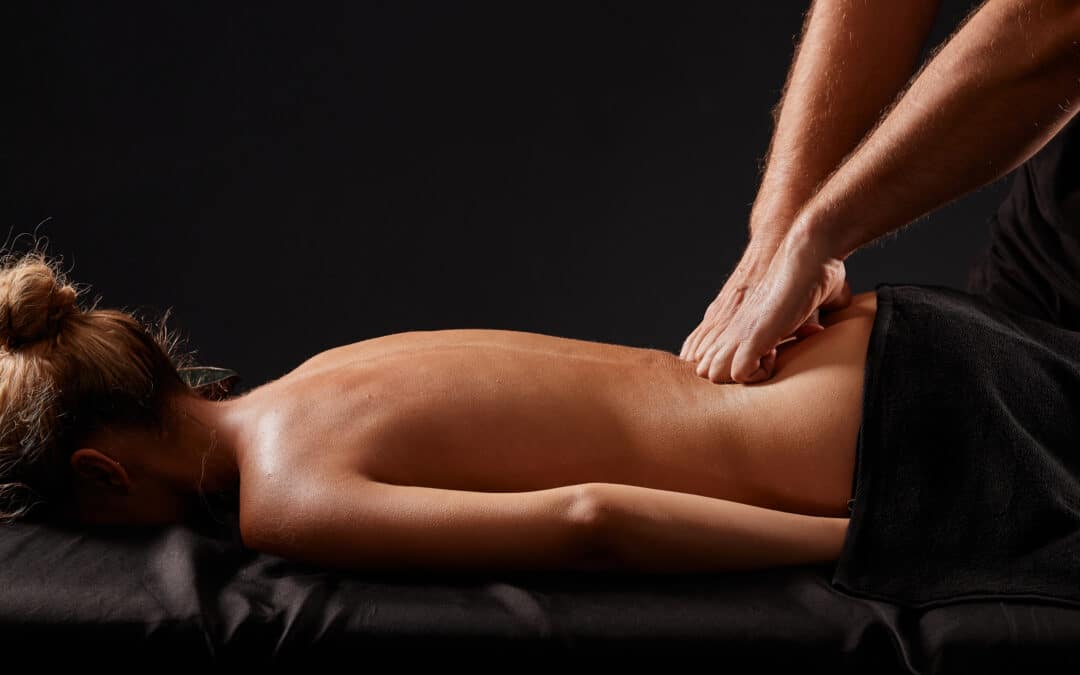Low back pain can stem from muscle strains or imbalances, commonly in the quadratus and gluteus medius. The proper massage technique, such as a trigger point massage, can target these issues, reducing inflammation, stiffness, and discomfort. Techniques like Tui Na, acupuncture, and deep tissue massage can also be beneficial. Massage promotes blood circulation, enhances muscle function, and elevates overall well-being. However, understanding potential risks is essential for safe treatment. It’s recommended to consult a skilled therapist for the best techniques to cater to specific pain points. Explore further to master effective strategies for relief.
Key Takeaways
- Identify the specific cause of your lower back pain, such as strain of quadratus lumborum or gluteus medius.
- Choose a massage technique suited to your needs, like trigger point massage or deep tissue manipulation.
- Consider Traditional Chinese Medicine techniques like Tui Na or acupuncture for a holistic approach.
- Understand massage therapy’s potential risks and side effects, such as bruising or allergic reactions.
- Combine professional therapy with daily self-massage techniques like foam roller exercises for optimal relief.
Massage for Low Back Pain
To fully comprehend the complexities of low back pain, one must acknowledge its potential sources, such as the strain of specific muscles, including the quadratus lumborum and the gluteus medius. Low back pain often results from tight muscles or muscle imbalances. The quadratus lumborum, which extends and laterally flexes the lumbar spine, can become strained by activities such as leaning over or running on uneven surfaces. This strain can lead to muscle tightness, contributing markedly to low back pain.
Similarly, the gluteus medius, which abducts and medially rotates the hip, can also cause discomfort if it becomes imbalanced or weak, leading to lower back and buttocks pain. These muscle strains and imbalances can often be addressed effectively through neuromuscular massage therapy. This specific form of therapy targets trigger points and muscle imbalances, providing relief for low back pain.
With their deep understanding of muscle anatomy and function, professional massage therapists can provide targeted healing for these specific muscles. They help alleviate the pain and discomfort associated with these familiar sources of low back pain, providing temporary relief and long-term healing and prevention.
Importance of Proper Massage Techniques
Proper massage technique implementation is essential in treating lower back pain. Correct techniques target specific areas of discomfort and enhance overall muscle function and blood flow. Thus, it is imperative to understand these techniques, their benefits, and how to choose the proper massage for the best pain relief and healing.
Understanding Massage Techniques
Frequently, the success of massage therapy for lower back pain hinges on the proper application of techniques, explicitly targeting muscles like the quadratus lumborum and gluteus medius. These specific muscles often harbor painful trigger points and muscle imbalances that, when addressed correctly, can lead to significant pain relief. Skilled practitioners can identify these areas and apply appropriate massage techniques to alleviate discomfort. Techniques such as neuromuscular massage focus on these muscle-related pain points, reducing stiffness and improving tissue elasticity. In addition, these techniques enhance blood flow in the lower back area, further facilitating the healing process. Understanding and utilizing the correct massage techniques is thus instrumental in increasing physical activity, improving flexibility, and ultimately enhancing the quality of life of individuals with lower back pain.
Benefits of Proper Techniques
Harnessing the power of proper massage techniques can greatly alleviate lower back pain by explicitly targeting muscles such as the quadratus lumborum and gluteus medius. These precise methods can reduce muscle stiffness and inflammation, offering substantial pain relief. The benefits extend beyond immediate symptom relief, as proper techniques also improve blood circulation and flexibility in the lower back area, enhancing overall muscle function. By addressing trigger points, nerve entrapment, and muscle imbalances, these techniques also pave the way for ideal healing. Therefore, professional massage techniques are a thorough approach to managing lower back pain, reducing pain intensity, and promoting relaxation and long-term health.
Choosing the Right Massage
Exploring many massage modalities can seem daunting, but it is vital in effectively targeting and relieving low back pain. The right type of massage, such as trigger point massage, can directly address the lower back muscles contributing to chronic discomfort. A skilled therapist can utilize this and other types of massage to release tension, enhance blood circulation, and improve flexibility. Massage therapy for lower back pain must be carefully chosen to cater to personal needs and conditions. Specific techniques can alleviate stiffness and promote relaxation for chronic low back pain. Selecting the appropriate massage metis is essential in managing low back pain and improving overall well-being.
Quadratus Lumborum Muscle Massage
While the quadratus lumborum muscle plays an essential role in bending backward and sideways, it can become strained from activities such as leaning over or sitting in a slumped position, leading to lower back pain and stiffness. This strain can cause tightness and discomfort, often felt as a dull ache on one or both sides of the lower back.
Stretching and massaging the quadratus lumborum muscle simultaneously can help reduce lower back pain. A trained massage therapist who can target the muscle accurately, alleviate tightness, and relax it to restore mobility is best suited for this treatment.
Trigger points, nodules in the muscle that can become painful when pressed, can also contribute to pain in the quadratus lumborum muscle. A professional massage therapist can identify and treat these points, helping to alleviate pain and tension.
To better understand, consider the following table:
| Factors | Effects | Treatment |
|---|---|---|
| Strained quadratus lumborum muscle | Lower back pain and stiffness | Stretching and massaging |
| Poor posture | Increased strain on the muscle | Correct posture and regular breaks from sitting |
| Trigger points | A localized pain in the muscle | Massage therapy |
This targeted approach can achieve significant relief from lower back pain.
Gluteus Medius Muscle Massage
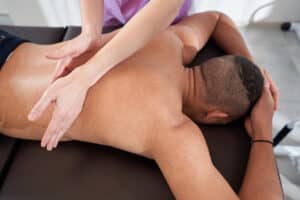 When dealing with low back pain, it is essential to consider the role of the gluteus medius muscle, a hip abductor responsible for moving the thigh and leg sideways. An imbalance or weakness in this muscle can lead to lower back and buttock pain, often caused by repetitive trauma, overuse, sudden physical activity, or previous injuries.
When dealing with low back pain, it is essential to consider the role of the gluteus medius muscle, a hip abductor responsible for moving the thigh and leg sideways. An imbalance or weakness in this muscle can lead to lower back and buttock pain, often caused by repetitive trauma, overuse, sudden physical activity, or previous injuries.
Gluteus medius pain can affect the lower back, buttocks, and back of the thigh. Hence, treating this muscle is vital in managing lower back pain. Massage therapy, specifically targeting the gluteus medius, can be beneficial. This therapeutic approach can help relieve pain, enhance muscular function, and improve overall mobility.
The massage therapy for the gluteus medius should be performed by a skilled therapist who understands the muscle’s anatomy and function. The treatment includes kneading, friction, and stretching techniques to boost blood circulation, relieve muscle tension, and promote healing. This targeted approach, focusing on the gluteus medius, can significantly alleviate lower back and buttocks pain, contributing to an improved quality of life for those suffering from these conditions.
Traditional Chinese Medicine Approach
The Traditional Chinese Medicine approach to low back pain encompasses various techniques, each offering a distinct pathway to relief. Techniques such as Tui Na, a form of massage therapy, are often employed to alleviate discomfort and restore balance within the body. Additionally, acupuncture, a practice involving the insertion of fine needles into specific body points, has been widely recognized for its effectiveness in addressing back pain.
Understanding Chinese Medicine
Exploring the world of Traditional Chinese Medicine (TCM), one finds holistic and natural solutions tailored for lower back pain. TCM focuses on symptoms and the underlying causes of discomfort. It employs a range of herbal therapies and practices, like moxibustion and cupping, to address lower back pain effectively, promoting overall well-being.
Here is a comparison of two TCM techniques:
| Technique | Benefit |
|---|---|
| Moxibustion | Alleviates back discomfort, improves energy |
| Cupping | Increases blood flow, relaxes muscles |
TCM aims to enhance immunity, mental health, and energy balance, all contributing to lower back pain relief. By understanding these principles, one can appreciate TCM’s potential as a holistic, natural approach to managing lower back pain.
Techniques in Tui Na
How can one address lower back pain using traditional Chinese medicine techniques? Tui Na, a specific therapeutic massage technique, presents a potent solution. As a cornerstone of Traditional Chinese Medicine, Tui Na incorporates acupressure and deep tissue manipulation to restore energy flow and alleviate discomfort in the lower back.
The Tui Na technique involves:
- Deep tissue manipulation targets the muscles and soft tissues to relieve pain and tension.
- Acupressure, wherein specific pressure points along the energy meridians are targeted to alleviate discomfort.
- It restores energy flow, as it is believed that pain arises from blocked energy pathways.
- We are promoting circulation and reducing inflammation, which collectively enhances well-being.
Thus, Tui Na offers a distinctive and practical approach to managing lower back pain.
Acupuncture for Back Pain
Shifting our focus to another essential element of Traditional Chinese Medicine, acupuncture presents a holistic method for alleviating lower back pain. This centuries-old practice aims to rebalance disrupted energy flow, a common cause of back pain in Traditional Chinese Medicine’s perspective.
Acupuncture can stimulate nerves, muscles, and connective tissues, promoting natural pain relief and improvement. Research supports its effectiveness in reducing lower back pain intensity and enhancing functional mobility. Here’s a brief overview:
| Aspect | Description | Benefit |
|---|---|---|
| Method | Thin needles inserted at specific points | Promotes energy flow |
| Treatment | Stimulates nerves, muscles, and connective tissues | Natural pain relief |
| Outcome | Reduces pain intensity | Improves functional mobility |
Thus, acupuncture offers a holistic approach to managing lower back pain beyond mere symptom control.
Deep Tissue Massage Techniques
Deep tissue massage techniques specifically target the deep layers of muscle tissue to alleviate chronic tension and pain in the lower back. This method of massage therapy employs firm pressure and slow strokes to reach the underlying layers of muscles and connective tissues, offering a highly effective solution to chronic back pain.
There are several fundamental techniques and benefits associated with deep tissue massage:
- Stripping: This involves applying deep, gliding pressure along the length of the muscle fibers using the elbow, forearm, knuckles, or thumbs. This technique helps alleviate muscle tension in the lower back.
- Friction: This technique applies pressure across the grain of the muscles to break up scar tissue and realign tissue fibers, reducing pain in the lower back.
- Improved Circulation: Deep tissue massage improves blood circulation, promoting healing and reducing inflammation in the lower back.
- Increased Mobility: Deep tissue massage can improve the range of motion in the lower back by breaking down adhesions that can restrict movement, significantly impacting the quality of life for those suffering from chronic back pain.
While deep tissue massage may cause some discomfort during the session, its long-lasting relief makes it a beneficial treatment for lower back pain.
Shiatsu and Lower Back Pain
In therapeutic massage, Shiatsu, a Japanese method that employs acupressure, has emerged as an effective treatment for persistent lower back pain. This massage technique is distinctly rooted in the principles of traditional oriental medicine, using acupressure to alleviate muscle tension and balance the body’s energy flow.
Shiatsu is more than mere physical therapy. It is a holistic therapy that targets specific pressure points to relieve the lower back region and promote well-being. It is based on the concept that an imbalance in the body’s energy flow can lead to physical discomfort, including persistent lower back pain. By addressing these imbalances, Shiatsu facilitates a thorough healing process.
This massage method is prevalent for individuals seeking a therapeutic approach to managing and alleviating lower back pain. Its capacity to address physical discomfort and energy imbalances makes it a favored choice among many. As a holistic therapy, Shiatsu helps reduce pain and contributes to an individual’s overall wellness, making it a valuable tool in the fight against persistent lower back pain.
Trigger Point Massage Benefits
While Shiatsu focuses on balancing the body’s energy to alleviate lower back pain, another effective method, trigger point massage, explicitly targets areas of muscle tension and discomfort in the same region. Unlike other massage types, trigger point massage pinpoints hyperirritable spots in the muscle that can cause pain, often referred to as trigger points. By effectively releasing these points, the massage can provide targeted relief for chronic or acute lower back issues.
The benefits of trigger point massage are manifold:
- Targeted Pain Relief: It focuses on specific areas of tension, providing targeted relief to lower back pain.
- Improved Blood Flow: Promoting muscle relaxation enhances blood circulation, which aids in the healing process.
- Promotes Muscle Relaxation: The technique helps alleviate muscle tension, leading to relaxation and relief.
- Enhanced Function: By reducing pain intensity, trigger point massage can improve overall function in the lower back region.
Thai Massage for Back Pain
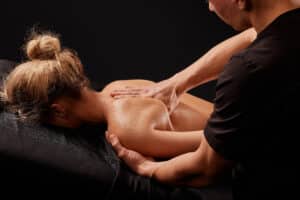 Shifting our focus to another effective treatment for lower back pain, we explore the world of Thai massage. This age-old technique, which centers on energy meridians to foster healing and relaxation, is particularly beneficial for back pain. It employs compressing, stretching techniques, and pressing actions to address discomfort.
Shifting our focus to another effective treatment for lower back pain, we explore the world of Thai massage. This age-old technique, which centers on energy meridians to foster healing and relaxation, is particularly beneficial for back pain. It employs compressing, stretching techniques, and pressing actions to address discomfort.
Thai massage operates on the belief that blockages within the body’s energy meridians can lead to pain and illness. This holistic therapy aims to regulate energy channels and promote lymphatic drainage, enhancing well-being and reducing sensation pain by focusing on these pathways.
The stretching techniques characteristic of Thai massage can be particularly effective in alleviating persistent lower back pain. These movements help to improve flexibility, release muscle tension, and promote better posture, all of which can contribute to backache relief.
However, consulting with a qualified Thai massage practitioner is essential to establish a personalized treatment plan that addresses specific needs and pain points. This consultation allows the practitioner to apply the appropriate pressure and stretching techniques, maximize the therapeutic benefits, and minimize potential discomfort during the massage session.
Contraindications of Massage Therapy
While massage therapy can be a potent tool in managing low back pain, it is crucial to understand these contraindications, which range from specific health complications to possible allergic reactions to massage oils. By doing so, we can guarantee that massage practices are both safe and efficient, reducing the likelihood of adverse effects.
Understanding Massage Therapy Risks
In understanding the potential risks of massage therapy, it’s essential to recognize that specific contraindications exist, particularly for people experiencing spinal pain caused by metastatic cancer or those with impaired sensitivity to heat and cold. Communicating openly with your therapist about allergies or sensitivities is vital.
1) Massage therapy risks: These can include bruising, headache, fatigue, and soreness.
2) Contraindications: Specific conditions, such as metastatic cancer or sensory impairment, make massage inappropriate.
3) Side effects: Unwanted reactions are usually mild and temporary but should be disclosed immediately.
4) Allergic reactions: Essential oils used in massage therapy can trigger allergies.
5) Pressure intensity: The level of force applied can influence the risk and severity of side effects.
Potential Health Complications
In the domain of massage therapy, it is essential to consider potential health complications or contraindications that may arise, especially for people with specific health conditions such as spinal pain due to metastatic cancer or impaired sensitivity to heat and cold. For example, massage is contraindicated for those with spinal metastatic cancer due to the risk of exacerbating the condition. Similarly, individuals with impaired sensitivity or inflammatory conditions should abstain from hot stone massages to prevent adverse reactions. Uncommon side effects, including bruising, headache, fatigue, and soreness, are generally short-lived. It’s vital to communicate allergies to massage oils to prevent allergenic reactions. Understanding the risks and benefits of each massage technique ensures safe and effective treatment.
Safe Massage Practices
After acknowledging potential health complications, it is essential to discuss the contraindications of massage therapy to guarantee safe and effective treatment. Safe practices are necessary to mitigate the risks and potential side effects.
Contraindications for massage therapy include:
- Individuals with spinal pain due to metastatic cancer should avoid massage therapy as it may exacerbate their condition.
- Hot stone massages may not be suitable for those with impaired sensitivity to heat and cold or inflammatory conditions.
- Side effects such as bruising, headache, fatigue, and soreness typically resolve within a day or two but should be monitored.
- Allergic reactions to massage oils can occur, so open communication with the therapist about known allergies is essential.
Understanding these risks is essential to ensure safe and effective treatment.
Side Effects of Massage Therapy
While massage therapy often relieves patients suffering from low back pain, it may also cause infrequent side effects like bruising, headache, fatigue, and soreness, which usually subside within a day or two. These side effects are uncommon and typically result from the intensity of the pressure applied during the massage session and the person’s tolerance to such pressure.
It is essential to understand that the risks associated with massage therapy are not confined to these side effects. For instance, allergic reactions to certain massage oils are possible but can be mitigated through open communication with the therapist about any known allergies. Moreover, massage therapy is contraindicated in certain circumstances. Individuals with spinal pain due to metastatic cancer, for example, should not undergo massage therapy.
Additionally, specific types of massage, like hot stone massages, may not be suitable for those with impaired sensitivity to heat and cold or inflammatory conditions. Despite these risks and contraindications, massage therapy can be a safe and effective treatment for low back pain with a trained professional.
Self-Massage Techniques for Relief
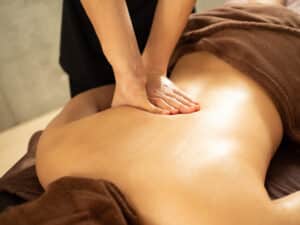 Notwithstanding the potential side effects and contraindications, massage therapy, when paired with self-massage techniques, can significantly alleviate low back pain. Self-massage, a cost-effective and accessible method, offers significant relief from lower back pain. It aids in releasing muscle tension, reducing stiffness, and promoting flexibility in the lower back region.
Notwithstanding the potential side effects and contraindications, massage therapy, when paired with self-massage techniques, can significantly alleviate low back pain. Self-massage, a cost-effective and accessible method, offers significant relief from lower back pain. It aids in releasing muscle tension, reducing stiffness, and promoting flexibility in the lower back region.
Self-massage techniques can be performed daily for a few minutes, providing relief and relaxation. The convenience of self-massage is accentuated by the minimal equipment needed, such as tennis balls or foam rollers. Consistent application of these techniques can complement professional massage therapy to manage lower back pain effectively.
The following are the key steps to follow:
- You identify the pain area and apply gentle pressure using your fingers or a tennis ball.
- Gradually increase the pressure while ensuring it remains comfortable.
- We are implementing foam roller exercises to alleviate muscle tension and enhance flexibility.
- They consistently practice these techniques daily for optimal relief.
Embracing self-massage techniques can offer significant relief, relaxation, and improved flexibility. Coupling these techniques with professional massage therapy can provide a thorough approach to managing lower back pain.
Professional Help and Consultation
Despite the importance of self-massage techniques, consulting a licensed massage therapist is essential for personalized treatment of severe or chronic lower back pain. These professionals understand the muscular system and can provide targeted therapies to address specific muscle issues contributing to lower back discomfort.
A massage therapist can apply specific techniques to alleviate chronic pain, improve mobility, and enhance the overall quality of life. Additionally, they can educate patients on proper posture and movement mechanics, which can prevent further injuries.
Collaboration with other healthcare providers is also crucial. For instance, a physical therapist can provide exercises to strengthen the back muscles, thus complementing the massage therapist’s work. They can work together to provide a holistic approach to managing lower back pain.
Lastly, seeking medical attention for persistent or debilitating lower back issues is essential. A healthcare professional can diagnose any underlying conditions and provide appropriate treatment. Remember, massaging a person with severe pain without the necessary qualifications can exacerbate the condition. Therefore, professional help and consultation are recommended and essential for managing chronic lower back pain effectively.
Frequently Asked Questions
What Type of Massage Is Best for Lower Back Pain?
The ideal massage for lower back pain varies per person. Deep tissue and myofascial release techniques, Shiatsu, trigger points, and Thai massage can all be effective. Consulting a qualified practitioner is recommended for tailored treatment.
How Often Should I Get a Massage for Lower Back Pain?
For low back pain management, initial massage therapy may be needed 2-3 times per week for acute conditions. For chronic pain, a weekly or bi-weekly schedule is advisable. Adjust the frequency based on pain levels and treatment response.
Can You Give Yourself a Massage for Low Back Pain?
Yes, self-massage can be employed for lower back pain relief. Techniques such as circular pressure or thumb sliding can target discomfort areas. However, limit tit o 5 minutes daily, and see ek professional help if pain persists.
How Do You Release Right Lower Back Pain?
Consider utilizing deep tissue massage techniques, trigger point massage, or even Shiatsu to address right lower back pain. Alternatively, the stretching aspects of Thai massage can also be practical. Consult a qualified practitioner for customized treatment.
Conclusion
Massage therapy is a type of manual therapy that involves applied pressure, manipulation, and stretching of the soft tissues in the body. There are many types of massage therapy, such as Swedish, deep tissue, sports, trigger point, and hot stone. Massage therapy can effectively treat various health conditions, including neck pain, chronic pain, and injuries. It can also help improve blood circulation, range of motion, and muscle tension.
When seeking massage treatment, it’s essential to consult with a licensed massage therapist or a health professional. They can help you choose the massage therapy that best suits your needs and ensure you receive proper form and technique. Different massage therapy techniques use different pressure levels, from firm to gentle touches. Some forms of massage therapy may be more effective for short-term pain relief, while others may provide long-term relief.
According to systematic review evidence, massage therapy reduces pain, improves blood flow, and promotes relaxation. However, some of these reviews have methodological flaws and sample size limitations. Additionally, massage therapy should not replace medical care but can be used as a complementary treatment alongside physical therapy or other active treatments. Massage therapy can help people maintain an active life and improve their quality of life.
